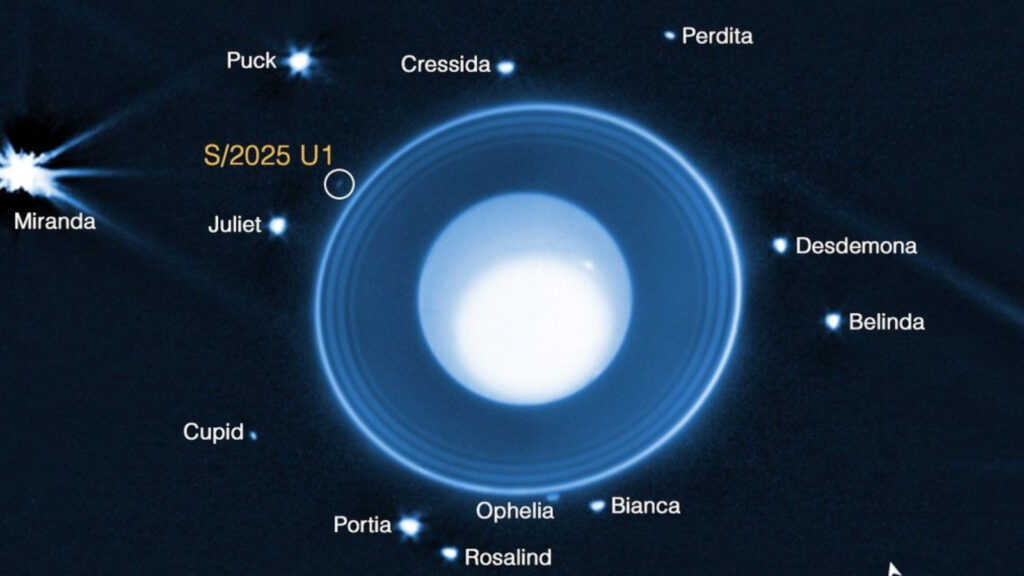
A team of scientists at the Southwest Research Institute has identified a previously unknown moon orbiting Uranus, thanks to imaging conducted by the James Webb Space Telescope. This discovery, made possible through a series of ten 40-minute exposures with Webb’s Near-Infrared Camera, reveals a moon approximately six miles in diameter, which has eluded detection by prior missions, including the historic Voyager 2 spacecraft that flew past Uranus over 40 years ago.
The newly discovered moon, currently designated as S/2025 U1, orbits at a distance of only 35,000 miles from the center of Uranus, roughly 15 percent of the distance from the Earth to its Moon. Its small size and proximity to the planet place it within the complex system of rings that surround Uranus. With this addition, Uranus now boasts a total of 29 known moons.
Insights into Uranus’ Chaotic History
Research team member Matthew Tiscareno emphasized the uniqueness of Uranus, stating, “No other planet has as many small inner moons as Uranus, and their complex inter-relationships with the rings hint at a chaotic history that blurs the boundary between a ring system and a system of moons.” The origins of the moons and rings in our solar system remain a subject of active investigation. In many instances, moons can be torn apart by the gravitational influence of larger bodies, leading to the formation of rings from the scattered debris.
This discovery offers a new avenue for examining these processes. As debris from a disrupted moon can potentially coalesce over time, it may ultimately form another moon. The findings from the Webb telescope provide crucial insight into how such celestial bodies interact and evolve.
Future Naming and Ongoing Exploration
Currently, S/2025 U1 awaits a more fitting name, as its designation lacks the dramatic flair of Uranus’ other moons, which include titles like Ophelia, Bianca, and Juliet—many of which are inspired by the works of William Shakespeare and Alexander Pope. The International Astronomical Union, responsible for naming celestial bodies, is expected to draw from literary sources before finalizing a more poetic title.
In the meantime, the Webb telescope will continue its observations from the second Lagrange point between the Earth and the Sun, capturing images in the darkest regions of space ever explored by a telescope. Although NASA oversees the spacecraft, various scientific teams can request observation missions as part of the General Observers program, which facilitated the discovery of S/2025 U1.
As our understanding of the solar system expands, this recent finding underscores the reality that there may still be many more celestial neighbors yet to be discovered.







